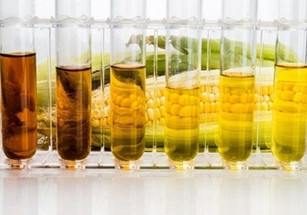Posted by Chrom Tech on 15th Oct 2025
Fuel Ethanol Fermentation Analysis by HPLC
Optimizing Ethanol Fermentation Analysis with HPLC
Ethanol production continues to grow worldwide as demand for renewable energy sources increases. Ethanol is typically produced by fermenting renewable feedstocks such as corn or other carbohydrate-rich materials. During fermentation, yeast and enzymes convert carbohydrates into ethanol, making it possible to track fermentation progress by monitoring carbohydrate levels. Since ethanol concentration is inversely related to carbohydrate concentration, regular carbohydrate measurement helps determine the precise point at which to stop fermentation for maximum yield.
The Importance of Fast Analysis
Monitoring carbohydrate concentration is critical in biofuel production—but standard carbohydrate analysis using HPLC columns can take 20 minutes or longer per sample. Such lengthy analysis times can slow down laboratory throughput and delay process optimization.
One biofuel producer faced this challenge and turned to Chrom Tech for support. Collaborating with Concise Separations, we helped develop a custom HPLC column designed to improve efficiency and reduce runtime. By refining the column chemistry and optimizing flow parameters, the team achieved a runtime reduction to approximately one-third of the original analysis time—allowing the producer to analyze more samples per day and make quicker process decisions.
Extend the Lifetime of Your HPLC Column
Protecting your analytical column not only improves data consistency but also reduces replacement costs. Implementing simple sample preparation techniques can significantly extend column life:
- Use a nylon syringe filter to remove particulates before injection. This minimizes buildup and prevents clogging.
- Install a guard column in front of your analytical column. Chrom Tech offers guard columns in the same stationary phases as nearly all our HPLC columns, ensuring compatibility and protection against sample contamination.
Conclusion
For biofuel producers, maximizing ethanol yield depends on precise monitoring of fermentation and minimizing downtime between analyses. By shortening HPLC run times and implementing proper sample preparation, you can streamline operations, improve throughput, and make timely process decisions. To learn more about optimizing your ethanol fermentation analysis, contact our Chrom Tech technical support team.
Frequently Asked Questions About Ethanol Fermentation Analysis
Why is fast carbohydrate analysis important in ethanol production?
Carbohydrate concentration inversely indicates ethanol content during fermentation. Faster analysis allows producers to monitor progress in real time and halt fermentation at the optimal moment for maximum yield.
How can I reduce my HPLC analysis time?
Using an optimized HPLC column, such as those developed in partnership with Chrom Tech and Concise Separations, can reduce analysis time by up to two-thirds compared to standard carbohydrate columns.
What’s the best way to extend the life of my HPLC column?
Always filter your samples through a syringe filter to remove particulates and use a guard column to protect your main column from contaminants and debris.

